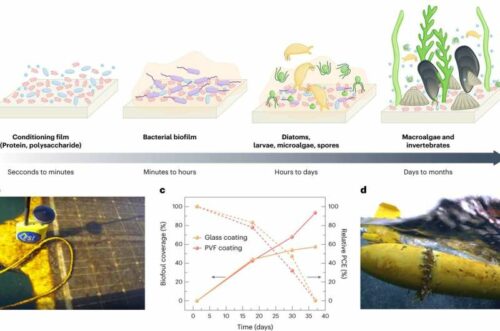NYU Tandon engineers seek to revolutionise underwater exploration by developing solar power solutions for AUVs and ROUVs, erasing recharging barriers and unlocking new aquatic frontiers.

Oceans, from ancient maps to now, captivate unexplored depths. Only 5% explored. Autonomous Underwater Vehicles (AUVs) and Remotely Operated Underwater Vehicles (ROUVs) promise deep exploration, but power limits persist. Short battery cycles and the absence of onboard power sources are significant obstacles.
Researchers at NYU Tandon School of Engineering aim to create alternate power solutions for AUVs and ROUVs, enabling unrestricted diving patterns and eliminating resurfacing for recharging. Furthermore, the goal is to establish power sources for underwater sensors and communication networks, reducing reliance on batteries and eliminating the need for physical tethers.
Solar power presents a promising solution due to its ability to penetrate deep ocean waters with sunlight. The researchers are investigating the feasibility of harnessing this energy for underwater vehicles. While marine power technologies like waves, tides, and currents have potential, they’re location-dependent and lack portability. Oceanic thermal energy conversion (OTEC), which capitalises on temperature gradients, stands out, but its reliance on specific diving patterns and geographical constraints limit its use for fixed underwater devices. Solar power’s underwater potential parallels land with consistent sunlight. Visible light reaches up to 50 metres, fueling devices. Solar cells empower fixed sensor communications, combined with OTEC, for AUV autonomy. Existing cells may fall short, optimised for red and infrared light, not underwater conditions.
Alternative technologies like gallium indium phosphide (GaInP) and cadmium telluride (CdTe) exhibit higher efficiency in ocean conditions. Next-gen solar cells like organic and perovskite (OSCs and PSCs) are considered. Finding a suitable absorber material is a major challenge. Biofouling, the buildup of organic matter, is a significant issue for marine tech, affecting solar cells’ light access and vehicle performance. In prior tests, fouling covered over 50% of surfaces in 30 days, hindering solar cell operation. The researchers address practical solar cell design and testing concerns. A solution involves LED lights simulating depth light, favouring silicon cells at shallows and others below two metres.
Although in initial stages, these specialised aquatic solar cells hold promise. The researchers’ efforts could pave the way for groundbreaking technologies, shedding light on solar energy and the enigmatic oceans that have captivated humans for centuries.
Reference: Jason A. Röhr et al, A dive into underwater solar cells, Nature Photonics (2023). DOI: 10.1038/s41566-023-01276-z






